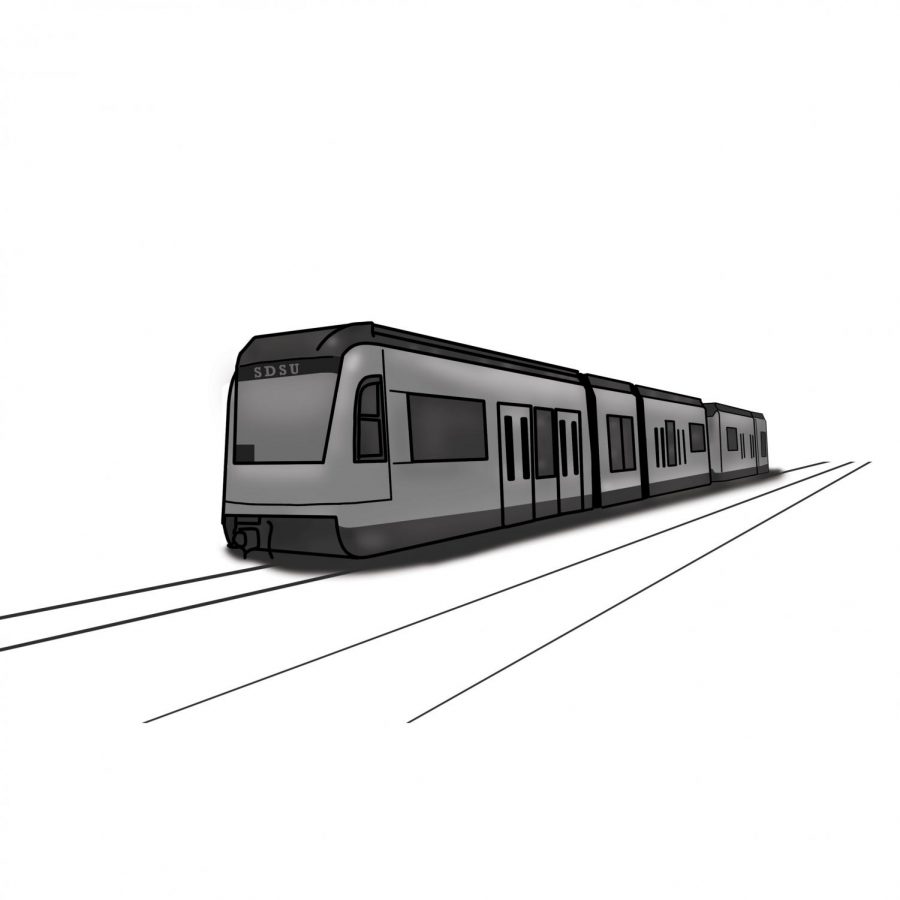If you have ever used the San Diego Metropolitan Transit System, you know how awful it is.
Buses and trolleys are scheduled to run every 15 minutes and have a tendency to run late. Many of the stops and stations are located far away from one another in isolated, inconvenient areas. There isn’t even a trolley that takes you directly to the airport or any of the beaches, some of San Diego’s major attractions.
It is an inefficient system, especially when a car can take you almost anywhere in the city from SDSU within 15 to 20 minutes. Less than 4% of San Diegans take public transportation to commute to work compared to the more than three-fourths of people who get to work by car.
While a car offers the luxury of privacy and convenience, it is time for local government and the general public to rethink transportation as the population grows and climate change intensifies. An efficient public transportation system would benefit the economy, the community and the individual.
The need for workers to assist in this kind of city-wide public transportation project would create many jobs . Not to mention the access to job opportunities that people may not otherwise be able to commute to. Shopping centers and other places of commerce would also become more accessible. This would be especially beneficial to college students who are prohibited or unable to afford to bring their car.
It would also reduce the number of cars on the road. Traffic has worsened in San Diego as more people move to the city. Having fewer cars on the road would alleviate some of this congestion.
Living next to a highway — which are plentiful in San Diego — is harmful to your health and can cause respiratory and cardiac issues from breathing in the pollutants. Fewer cars would decrease gas emissions improving air quality and health. Public transportation requires more walking to get to each stop and encourages a more active lifestyle which can also improve general wellness.
Taking public transport instead of private vehicles can also save you thousands of dollars a year. The costs of owning a vehicle quickly add up with gas, maintenance, car payments, fines and tickets, insurance costs and parking permits. It may boost your productivity as well by using travel time for work, for reading or entertainment instead of having to focus on the road.
You can also meet new people on public transportation. And for the quiet types, it can be a great place to people watch.
All forms of public transport are significantly safer than traveling in a private vehicle. The American Public Transportation Association found riding on public transportation reduces your chance of an accident by 90%rather than taking a car.
San Diego’s MTS is going to need major improvements if it wants to become one of the leading forms of transportation for its residents. One of the biggest challenges is that MTS can’t operate their bus routes on a singular grid like cities such as Los Angeles and Portland are able to do. San Diego is heavily sprawled out and divided by its many freeways, so it will have to look at other solutions.
The most promising solutions would focus on increasing the frequency and speed of its transit options.
Transit options should ideally run at least every ten minutes and be as punctual as possible. This would decrease the waiting period at stops, especially if you are waiting in between buses and trolleys.
Creating road conditions that prioritize buses keeps public transit running on time. Bus-only lanes would allow buses to get to their stops at their scheduled times because they wouldn’t have to wait behind general traffic. Traffic lights should automatically turn green when buses are approaching an intersection.
Riders should be able to board from all doors, not just the front, unless they are paying cash. A scanning machine for compass cards or tickets on your phone can be put in place for the back doors.
Additionally, MTS should create a user-friendly app to make it easy for people to ride on public transit. It should list out all the schedules and stations and map out travel plans. It should also show riders where the closest stops are located, when to arrive, any connecting buses or trolleys they need to take and the estimated time of arrival to their final destination.
Constructing more bus stations and expanding the trolley lines would take more time and cost more money, but are favorable once completed. Trolleys that run directly to popular destinations such as beaches, North Park, Balboa Park and the airport could potentially boost tourism within San Diego and make these locations more accessible to the people who live here.
Such improvements would certainly be a huge investment, but well worth it. Public transit shouldn’t be viewed as the last option of transportation, rather it should be a viable alternative to driving a car. A highly efficient MTS is what San Diego needs going into the future.
Catherine Van Weele is a sophomore studying political science. Follow her on Twitter @catievanweele.











